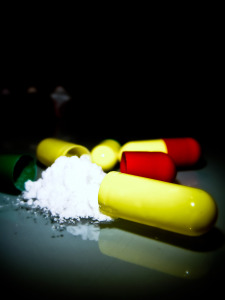Supplement Ingredient Regulatory Status
Dietary ingredients younger than 23 suffer from a major case of age discrimination.. But whether your ingredient is old or new, FDA says “gorilla in the room” is safety.
Here’s some ways to overcome “ingredient age-ism” in an uncertain regulatory climate (Hint: Just gather proof they’re safe!)
Supplement Ingredient Regulatory Status
Regardless of the regulatory classification of an ingredient, it must be proven safe. NaturPro helps companies develop defensible safety documentation for ingredients and products that can be used to support the requirements of FDA and others around the world.
In August 2016, FDA issued new draft guidance on the NDI requirement, in addition to final guidance on GRAS requirements which includes a new voluntary notification process. As of October 2017, no anticipated release date for revised NDA guidance has been announced.
As a result, the industry has developed several ways to evaluate the legal and regulatory climate in other legitimate and iterative ways, such as Safety Pre-assessments and FDA Regulatory Communications.
A Safety Pre-assessment report is often used as a foundation to later develop NDI (New Dietary Ingredient) and GRAS (Generally Recognized as Safe) “Master Files” for all kinds of ingredients and finished products for dietary supplements and foods. A Safety Pre-assessment can be quickly conducted to determine the appropriate strategy and level of risk.
A Regulatory Pre-assessment is a broad-picture review of the likely regulatory status and risk assessment based on the expected regulatory status of a food or dietary ingredient. This is an abbreviated form which is based on a brief review based on widely known standards form organizations like FCC, CODEX, FDA, USP, WHO, TGA, Health Canada, EFSA and others
Scientific and Peer-Reviewed Evaluations, Determinations, Reviews, Pre-Assessments and Regulatory Communications from NaturPro Scientific support key FDA requirements that marketers and manufacturers are responsible to prove the safety of their products.
Specifically, “credible and reliable” scientific information related to product integrity, safety and quality must be compiled and reviewed by scientific experts, as part of any safety assessment.
Contact us to determine the best strategy to prove the safety of your products.
Ingredient Safety Assessments — ODI, NDI or GRAS?
Here is a framework of basic requirements required to support most Safety and Regulatory Assessments
- Material Identity and Composition
- Consumption
- Domestic
- Global
- Regulatory Status
- Old Dietary Ingredient (ODI)
- New Dietary Ingredient (NDI)
- GRAS
- Self-GRAS
- Food Additive Petition
- USP
- Scientific Data
- LD50/acute toxicity/chronic/subchronic toxicity studies
- Bioavailability and ADME
- Mutagenicity/Carcinogenicity
- Reproductive Toxicity
- Allergenicity
- Randomized Controlled Trials
- Observational Human Trials & Epidemiology
- Case Reports, Adverse Event Reports
- Composition, Supply and GMP
- Full Chemical and Nutritional Characterization
- Identity, Specification, Test Methods
- Adulterants and Risk Assessment
- Manufacturing Facility GMP
- Quality Guarantees and Agreements
Contact us to learn more!
